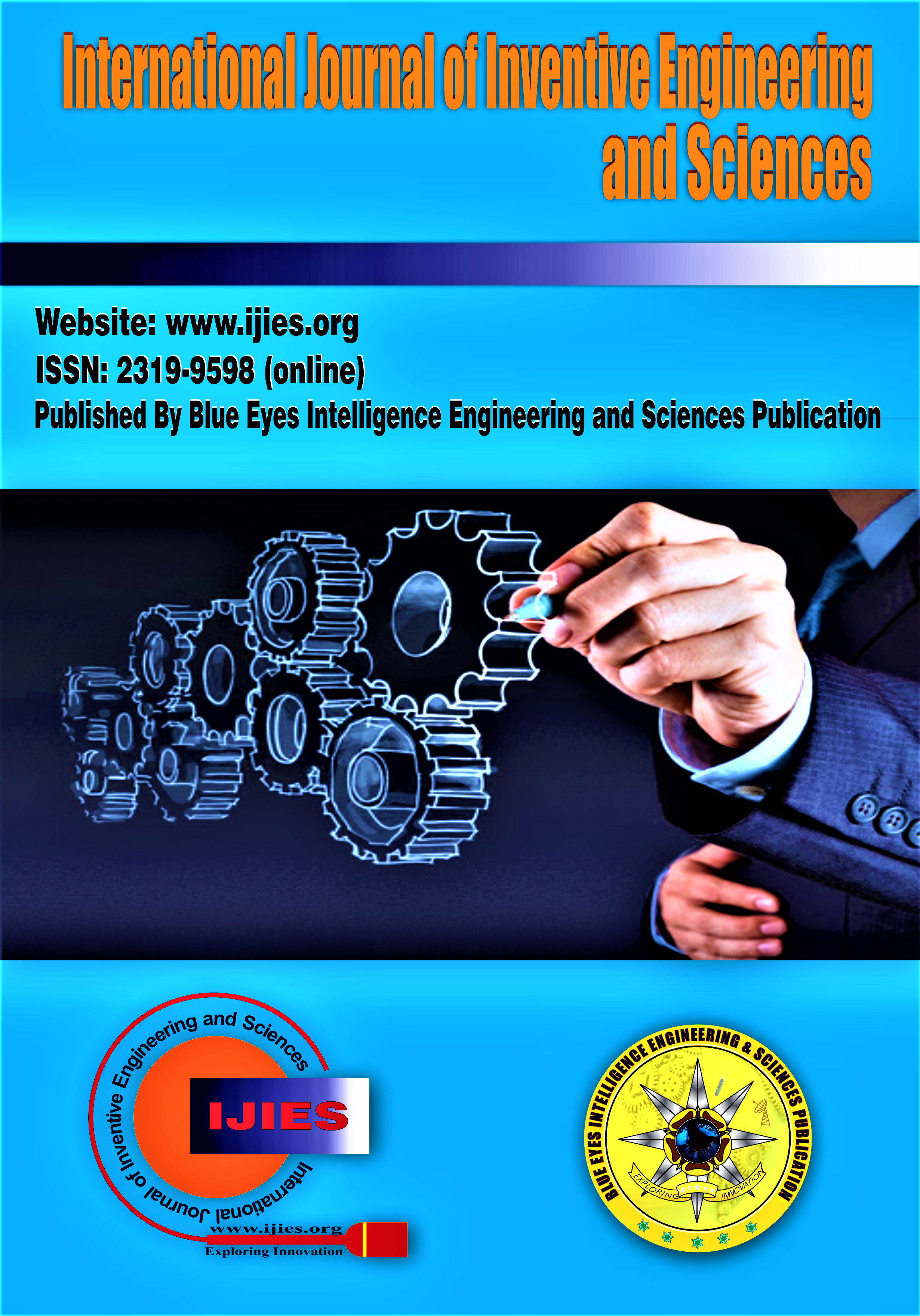Conservation Strategies for Disappearing Lakes in Africa: Insights from Lake Haramaya, Ethiopia
Main Article Content
Abstract
Lake Haramaya, once a crucial freshwater reservoir in Ethiopia, has suffered ecological collapse due to climate change, unsustainable land use, and groundwater depletion. This review synthesizes research on the lake’s decline, conservation gaps, and restoration strategies. By comparing Lake Haramaya to other disappearing lakes in Africa, we identify policy failures, hydrological mismanagement, and socio-economic consequences. Effective restoration requires integrating community-driven conservation, policy interventions, and sustainable water management practices. These findings provide valuable insights for conserving similar degraded lakes worldwide.
Downloads
Article Details
Section

This work is licensed under a Creative Commons Attribution-NonCommercial-NoDerivatives 4.0 International License.
How to Cite
References
Gebrehiwot, K. A., Bedie, A. F., Gebrewahid, M. G., & Hishe, B. K. (2019). Analysis of Surface Area Fluctuation of the Haramaya Lake using Remote Sensing Data. Momona, Ethiopian Journal of Science, 11(1), 140-151. DOI: https://doi.org/10.4314/mejs.v11i1.9
Sitotaw, H., Reddy, R. U., & Yesuf, A. (2022). The Drivers for the Collapse of Lake Haramaya and Proposed Integrated Rehabilitation Strategies. International Journal of River Basin Management. DOI: https://dx.doi.org/10.1080/15715124.2022.2047709
Asad, Z., Adem, D., & Farah, A. (2016). Evaluation of the Existing Conservation Practices on Lake Haramaya Catchment. African Journal of Soil Science, 4(3), 321-327. URL: https://www.internationalscholarsjournals.com/articles/evaluation-of-the-existing-conservation-practices-on-lake-haramaya-catchment.pdf
Sorecha, E. M. (2017). Growth and Survival Rate of Endemic Trees in Lake Haramaya Watershed. Journal of Horticulture and Forestry, 9(5), 33-39. https://www.researchgate.net/publication/318193962
Eshetu, T. S., Bayisa, W. T., & Kibrom, A. G. (2016). Soil Erosion, Sedimentation Yield, and Conservation Practices. https://www.scribd.com/document/736418462/Soil-Erosion-Sediment-Yield-and-Conservation-Practices
Abebe, S., Haji, J., & Ketema, M. (2014). Impact of the Disappearance of Lake Haramaya on the Livelihood of the Surrounding Community. Journal of Economics and Sustainable Development, 5(18), 141-147. https://core.ac.uk/download/pdf/234646577.pdf
Syraji, S., Mezgebo, A., Said, A., & Brhanu, M. (2017). Developing Community-Based Ecotourism for Conservation in Haramaya and Gurawa Districts. African Journal of Hospitality, Tourism and Leisure, 6(3). https://www.ajhtl.com/uploads/7/1/6/3/7163688/article_13_vol_6__3___2017.pdf
Scholte, S. S. K., et al. (2015). Reframing NES (Nature–Ecosystem Services) for Research and Practice: A Conservation Challenge. Conservation Letters, 8(6), 441–449. https://link.springer.com/article/10.1007/s10531-021-02182-y
Reed, M. G., et al. (2018). Participatory Environmental Governance: Learning from Cross-Cultural Comparisons. Environmental Management, 61(2), 295–309. https://www.researchgate.net/publication/228122528_Environmental_Governance
Ezzine-de-Blas, D., Wunder, S., Ruiz-Pérez, M., & Moreno-Sánchez, R. (2016). Global Patterns in the Implementation of Payments for Environmental Services. PLOS ONE, 11(3): e0149847. https://journals.plos.org/plosone/article?id=10.1371/journal.pone.0149847
Leach, M., & Scoones, I. (2019). Cultural Politics of Forest Governance: Community Forestry Revisited. Geoforum, 104, 83–92. https://cdn.forestresearch.gov.uk/2022/02/community-forest-governance-rer.pdf
UNESCO World Water Assessment Programme. (2015). Water for a Sustainable World: Water Resources Management Guidebook. Paris: UNESCO. https://www.unesco.at/fileadmin/Redaktion/Publikationen/Publikations-Dokumente/2015_WWDR_Full_Report_en.pdf
Biermann, F., et al. (2017). Polycentric Governance of Global Climate Change Mitigation: Domestic Institutional Change across the G20. World Development, 90, 398–408. http://www.aeaweb.org/articles.php?doi=10.1257/aer.100.3.641
Pahl-Wostl, C., et al. (2019). The Adaptive Water Governance Path: Examining Its Dimensions, Drivers and Underlying Processes. Water Resources Management, 33(8), 2835–2851. DOI: http://dx.doi.org/10.1007/978-3-540-75941-6_4
Ansell, C., & Gash, A. (2018). Collaborative Governance in Theory and Practice. Journal of Public Administration Research and Theory, 28(3), 391–408. http://marphli.pbworks.com/w/file/fetch/55667103/Collaborative_governance_theory.pdf
Pahl-Wostl, C., et al. (2019). Transformative Adaptation in Water Governance: Integrating Water Management, Policy, and Social Learning. Water Resources Management, 33, 3023–3046. https://www.iwmi.org/multimedia/transformative-adaptation-through-local-governance/
Young, J. C., et al. (2020). Water for Sustainability: A 20-Year Analysis of Policy and Planning Dynamics. Water Policy, 22(7), 1225–1240. https://www.aquatechtrade.com/news/water-treatment/sustainable-water-essential-guide
Alder, D., & Hueth, D. (2016). Biodiversity in Forest Plantations: Implications for Economic Sustainability. Australian Forestry, 79(3), 173-185. https://www.cifor-icraf.org/publications/pdf_files/others/biodiversity.pdf
Holl, K. D., & Aide, T. M. (2019). When and Where to Actively Restore Ecosystems?. Forest Ecology and Management, 448, 237–244. https://lerf.eco.br/img/publicacoes/2010_0511%20When%20and%20where%20to%20actively%20restore%20ecosystems.pdf
Chazdon, R. L., et al. (2016). When Is a Forest a Forest? Forest Concepts and Definitions in the Era of Forest and Landscape Restoration. Ambio, 45(5), 538–550. DOI: https://doi.org/10.1007/s13280-016-0772-y
Cunningham, S. A., et al. (2018). Efforts to Reforest the Brazilian Amazon: Challenges and the Need for a New Approach. Nature Sustainability, 1(4), 184-194. DOI: https://dx.doi.org/10.1016/j.foreco.2020.118120
Zahawi, R. A., et al. (2021). High Seedling Mortality under Tropical Forest Restoration: Insights from Across the Globe. Restoration Ecology, 29(4), e13312. DOI: https://doi.org/10.1111/rec.13312
Reed, M. S., et al. (2018). A Systematic Review of Stakeholder Participation in Environmental Governance. Journal of Environmental Management, 205, 317–328. https://citeseerx.ist.psu.edu/document?repid=rep1&type=pdf&doi=5a1eaf45ae2bdbf07f0647466939a87108882cfe
Gössling, S., & Hall, C. M. (2018). The Routledge Handbook of Ecotourism. London/New York: Routledge. https://www.routledge.com/Routledge-Handbook-of-Ecotourism/Fennell
Telfer, D. J., & Sharpley, R. (2019). Ecotourism and Sustainable Development: Critical Reflections 10 Years On. Journal of Ecotourism, 18(2), 135–150. DOI: https://doi.org/10.1007/s10668-022-02190-0
Gössling, S., & Scott, D. (2018). Tourism and Sustainability: A Review of Ecotourism Research. Tourism Management, 71, 140–162. DOI: https://dx.doi.org/10.6027/TN2018-534
Chiang, L., & Ivanov, S. (2019). Ecotourism Principles and the New Sustainability Paradigm. Journal of Sustainable Tourism, 27(4), 512–530. https://www.unep.org/resources/report/ecotourism-principles-practices-and-policies-sustainability
Menegat, R., & Osti, G. (2017). Community-Based Ecotourism and Landscape Restoration in the Brazilian Pantanal: Challenges and Opportunities. Environmental Development, 23, 52–63. https://www.youth4nature.org/stories/community-based-forest-landscape-restoration-in-brazil
Mbaiwa, J. E. (2017). Tourism for Empowering Communities: A Case Study of Botswana. Journal of Sustainable Tourism, 25(5), 673–689. https://www.researchgate.net/publication/275342741_Tourism_for_Development_Empowering_Communities
Rieu, M., Ndejuru, M., & Diop, M. (2020). The Impact of Climate Change on Lake Chad: Strategies for Resilience and Adaptation. Global Environmental Change, 62, 102058. DOI: https://dx.doi.org/10.31289/jap.v12i2.8397
Makhmudov, M., Yusupov, I., & Saidov, F. (2018). Analysing the Environmental Rehabilitation of the Aral Sea Region. Environmental Monitoring and Assessment, 190(9), 1-15. https://link.springer.com/article/10.1007/s40333-024-0055-6
Zhang, J., Zhen, H., & Chen, W. (2020). Review of Restoration Strategies for the Aral Sea. Ecological Engineering, 145, 105731. https://pmc.ncbi.nlm.nih.gov/articles/PMC10372098/





